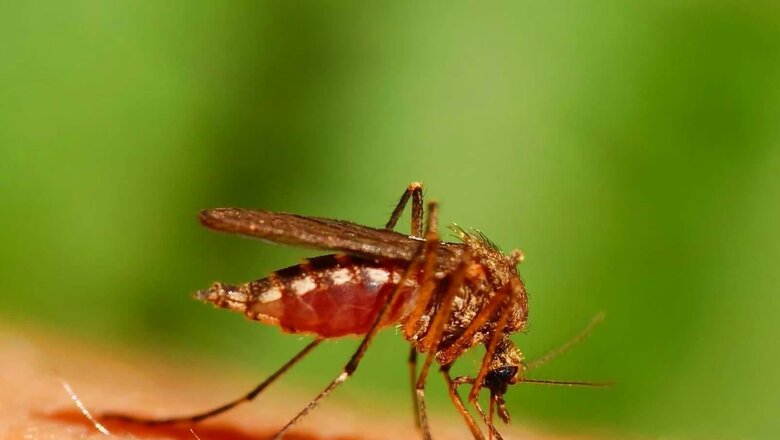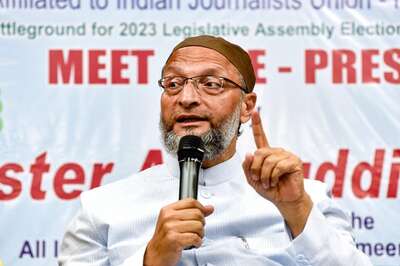
views
India could soon become a global example for its malaria-elimination strategies as it has managed to reduce malaria-driven deaths by almost 80 per cent in the last five years, said a top officer of a Washington-based not-for-profit organisation, Malaria No More.
According to Kelly Willis, managing director at the organisation, “in 2015, 384 people died in India due to malaria in comparison to 2021, when just 90 deaths took place. As per these figures, it’s a cut of almost 80 per cent in just five years. The data shows, the cases of malaria also came down from 12 lakh in 2015 to just 1.5 lakh in 2021.”
India can be a leader in showing what strategies and technologies are needed to accomplish the elimination of malaria across the globe, Willis told News18.
Prime Minister Narendra Modi was among the 18 global leaders who endorsed the malaria-elimination roadmap of the Asia Pacific Leaders Malaria Alliance at the East Asia Summit held in Malaysia in 2015. It was then that the alliance leadership set the goal of ensuring that the region becomes free of malaria by 2030.
As you go that last mile, from 1.5 lakh cases to zero – to be certified as malaria-free in 2030, India needs to show zero transmission starting 2027 till 2030 – the country has five years to eliminate malaria.
“Every single of those 90 deaths (which took place in India last year due to malaria) is a tragedy and worldwide, of course, malaria last year killed more than 6 lakh people,” said Willis.
She said that malaria perpetuates the cycle of poverty.
Those 1.5 lakh cases of malaria in India which are concentrated in states like Odisha or in areas where it goes unchecked are really preventing some communities from flourishing, she added.
“Uttar Pradesh has the second-largest population in India, and earlier, it used to have a high incidence of malaria but now we’ve seen a drastic decline, reflecting improvement,” said Willis.
Now, the top five highest malaria burden states are Chhattisgarh followed by West Bengal, Odisha, Maharashtra, and Jharkhand.
Right messaging to vulnerable community is key
“India’s national strategic plan is being drafted and we alongside a lot of other critical partners such as the World Health Organization, the Bill and Melinda Gates Foundation and other technical partners are helping the health ministry and vector-borne control centre to draft that national strategic plan,” said Willis.
One of the most critical strategies going forward, she said, is continued messaging and education of the communities about the ways they can protect themselves from malaria.
“Every household contributes to the suppression of malaria transmission by allowing their homes to be sprayed with indoor, residual spraying insecticide which actually kills mosquitoes very effectively at sleeping time,” Willis said. “Avoiding mosquito bites is basically what individuals can do for themselves and getting those messages out there, just making sure that the most rural and vulnerable populations have access to that information is critical.”
Malaria No More runs an additional team of 265 people who are extensions to the ASHA Workforce and participate in educating the communities that are almost inaccessible.
It also distributes long-lasting, insecticide-treated bed nets and carries rapid diagnostic tests along with anti-malaria medicines.
“So, we need to continue to build a workforce that can reach those most rural communities,” said Willis.
‘Need to keep budgets adequate’
Willis said the other strategy to eliminate malaria by the given timeline is just to make sure that at the central government level, we’re not forgetting about malaria.
Prime Minister Modi has reinforced this goal on a couple of occasions.
“But we need to remind everyone that this is a feasible goal, and we need to keep our eyes on it. That means we need to keep the budgets high,” she said. “We need to make sure that the appropriate number of resources are being invested… within the vector-borne control disease, an inappropriate share is invested in malaria.”
The data shared by Willis shows a trend highlighting an increase in funding (both from global funds and government) from 2018 to 2019 and then a subsequent decline in 2020.
Adopting new technologies
“India has the opportunity to be a real trailblazer in integrating new technologies into its malaria programme,” Willis said. “So, how quickly will India recommend a mass vaccination programme if the next-generation vaccine is shown to be effective? Or how willing is India to use genetically modified mosquitoes strategically in states, where the malaria cases aren’t coming down as fast as they should? What about the use of monoclonal antibodies?”
There’s also a whole category of new technology that Malaria No More is actually driving, she said, which is data and analytics and forecasting technology where the organisation uses meteorological data, observation data, and a whole host of other data sources to predict the outbreak.
Such technology, Willis said, allows states to be incredibly more precise in their programming. “Our tool that we are piloting is called the malaria prediction planning tool which is a very sophisticated artificial intelligence-driven forecast tool that produces very easy-to-read data which can help state governments to prepare and send rapid diagnostics and anti-malarial medicines in advance,” she said. “This is a complete India-based innovation developed in Odisha. We started out using data from an international organisation from IBM but now we have found that IMD data is just as high quality and we no longer have to outsource that piece.”
Read all the Latest News India and Breaking News here














Comments
0 comment